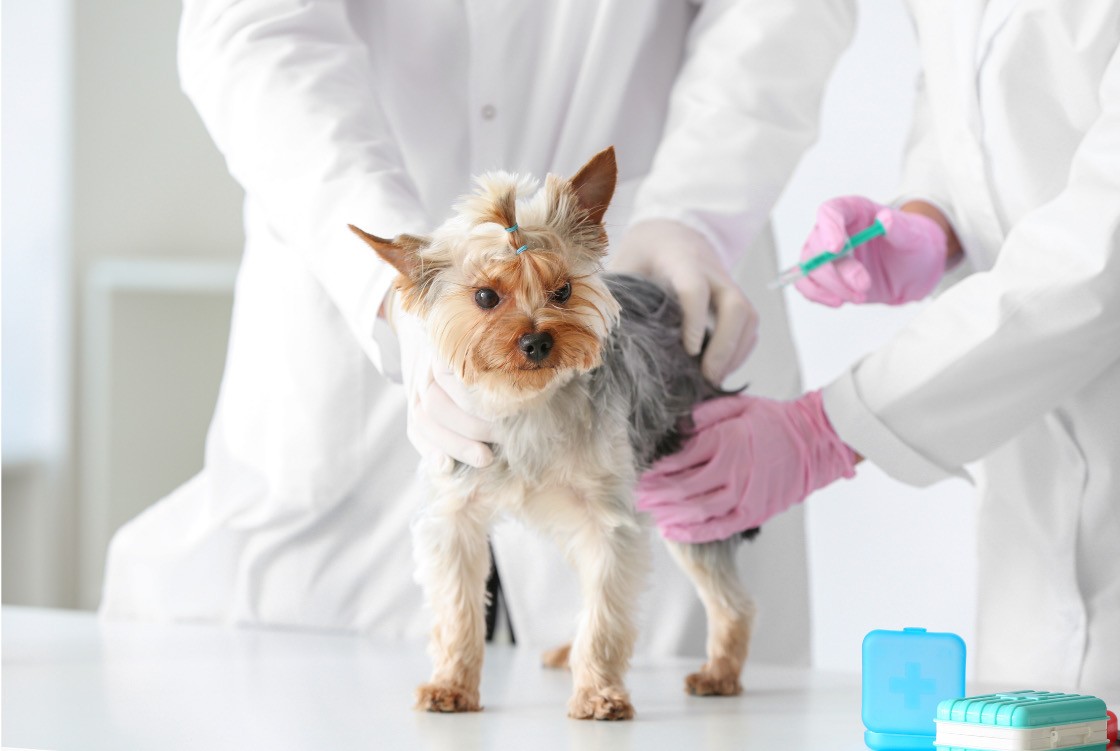
Photo: Ben Lambert via Unsplash
Antifreeze poisoning in dogs is a major winter danger.
No one needs to tell you sweets are bad for your fur kid; we all know not to let our dogs eat chocolate or candy containing artificial sweeteners.
But in researching our last blog post Keeping Your Small Dog Safe In Winter, we were reminded of one sweet that poisons over 90,000 pets and wild animals (and about 6,000 children) annually, and it’s not on the desserts table.
It’s ethylene glycol, the primary ingredient in antifreeze. And, it’s contained in detergents, brake fluids, and even some cosmetics.
but didn’t they fix that?
Although antifreeze manufacturers voluntarily added a bittering agent to their product about a decade ago, that addition did nothing to stop dogs from being poisoned. The reason? According to Dr. Wismer, one-time director of the ASPCA Poison Control Center, dogs are “gulpers” who “don’t take the time to taste” before lapping up.
Our winter safety blog post linked above tells you how to avoid this deadly toxin. But if the worst happens and your small dog ingests even a trace amount of antifreeze or any other product containing ethylene glycol, immediate veterinary care is crucial. Waiting “to see” how your pup does in a day, or even a few hours, is not an option.
act immediately-because this toxin will
When ingested, ethylene glycol, which makes up 95% of the ingredients in most antifreeze (even though non-toxic alternatives exist!!) is rapidly absorbed into the bloodstream and some of it is broken down into toxic substances that cause severe kidney damage. You can read more about the pharmacology of the process here in the Merck Veterinary Manual.
For our purposes, while we appreciate knowing what happens, we want our fellow pet parents to know the antifreeze poisoning timeline and the signs of poisoning, so they can act quickly enough to save their dogs from death. Treatment can speed up getting the poison through the system before it’s metabolized, and it can dilute the damage caused by toxins already broken down.
symptoms and timeline
Here are symptoms of antifreeze poisoning and the timeline in which you’ll see them, along with the physiological damage that’s occurring along the way:
|
Timeline |
Signs |
What’s Happening |
|
Within 30 minutes – 12 hours of ingesting |
* walking as if intoxicated * low body temperature * drooling * vomiting * seizures * excessive drinking and urinating |
Ethylene glycol is rapidly flooding the bloodstream through the GI track. The early hours of this stage are the best chance for recovery. |
|
CRITICAL TREATMENT WINDOW: YOU MUST ACT WITHIN 12 HOURS OR PROGNOSIS GRIM |
||
| Within12-24 hours of ingesting | *you may see misleading appearance of improvement! *Drunkenness resolves *elevated heart rate *dehydration |
Body is continuing to metabolize ethylene glycol and turning it into toxins that will damage and eventually shut down organ function. |
| Within 36-72 hours of ingesting | * Severe lethargy *swollen, painful kidneys *lack of urination * depression * vomiting * seizures * drooling * refusal to eat |
Severe kidney damage/failure |
| Adapted from Pet Poison Hotline and Merck Veterinary Manual | ||
are you prepared?
We admit, we certainly weren’t. But we are now. We have the ASPCA Poison Control App and the phone number in our phones. You can get both linked in our small bites guide, below. Hug those pups, and have fun!
You’ll Also Love
Leave a Reply
Your email address will not be published.




